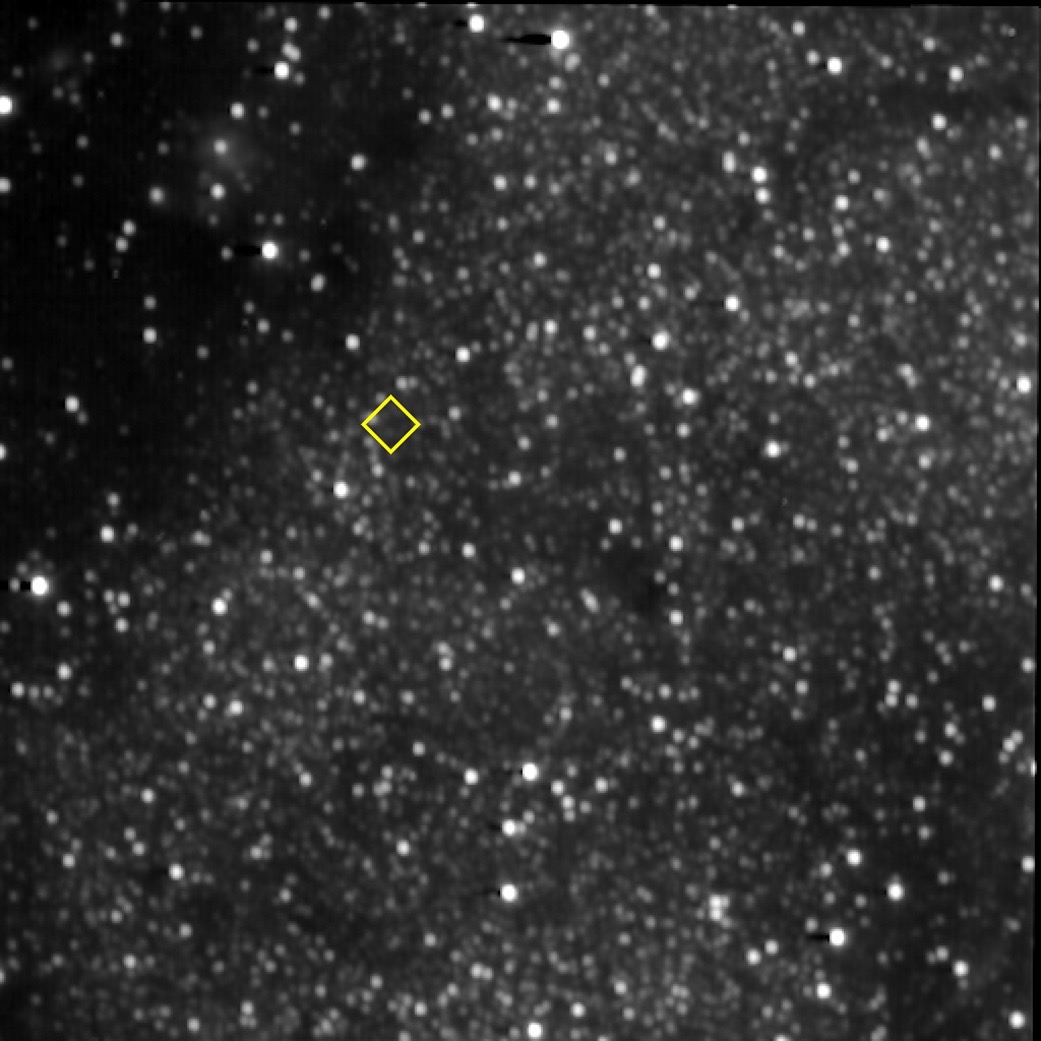NASA Pluto Probe Is More Than Halfway to Next Flyby Target

NASA's New Horizons spacecraft is now more than halfway from Pluto, which it famously flew past in July 2015, to its next flyby target: a distant object known as 2014 MU69.
New Horizons hit the milestone just after 8 p.m. EDT Sunday (April 2; 0000 GMT on April 3). At that time, the probe was 486.19 million miles (782.45 million kilometers) beyond Pluto and the same distance from 2014 MU69, NASA officials said.
"It's fantastic to have completed half the journey to our next flyby; that flyby will set the record for the most distant world ever explored in the history of civilization," New Horizons principal investigator Alan Stern, of the Southwest Research Institute in Boulder, Colorado, said in a statement. [New Horizons' Pluto Flyby: Complete Coverage]
This Friday (April 7), New Horizons will reach another halfway point in its Pluto-to-MU69 trek. At 5:24 p.m. EDT (2124 GMT) on that day, the same amount of time will separate the spacecraft's closest approach toPluto (which occurred at 7:48 a.m. EDT on July 14, 2015) from its closest approach to MU69 (which is scheduled to occur at 2 a.m. EDT on Jan. 1, 2019), NASA officials said.
"The nearly five-day difference between the halfway markers of distance and time is due to the gravitational tug of the sun," NASA officials wrote in the same statement. "The spacecraft is actually getting slightly slower as it pulls away from the sun's gravity, so the spacecraft crosses the midpoint in distance a bit before it passes the midpoint in time."
Investigating the roughly 30-mile-wide (50 km) 2014 MU69 up close is the main objective of New Horizons' extended mission, which NASA approved last year. But that extended mission also involves a broader survey of the Kuiper Belt, the ring of frigid bodies beyond Neptune's orbit.
"In addition to MU69, we plan to study more than two dozen other KBOs [Kuiper Belt objects] in the distance, and measure the charged particle and dust environment all the way across the Kuiper Belt," said New Horizons project scientist Hal Weaver, of the Johns Hopkins Applied Physics Laboratory (APL) in Laurel, Maryland.
Get the Space.com Newsletter
Breaking space news, the latest updates on rocket launches, skywatching events and more!
New Horizons was the fastest spacecraft ever launched, streaking away from Earth at about 36,000 mph (58,000 km/h) back in January 2006. The probe is now traveling at about 32,000 mph (51,500 km/h), NASA officials said.
New Horizons spent much of its long journey to Pluto in sleep mode, but the spacecraft has been "awake" since Dec. 6, 2014. That will change soon, however; mission team members plan to put New Horizons back in hibernation for 157 days beginning April 7 (two hours before it hits the time halfway mark, in fact).
The spacecraft is currently about 3.5 billion miles (5.7 billion km) from Earth. All of its instruments and systems are in good shape, NASA officials said.
Follow Mike Wall on Twitter @michaeldwall and Google+. Follow us @Spacedotcom, Facebook or Google+. Originally published on Space.com.
Join our Space Forums to keep talking space on the latest missions, night sky and more! And if you have a news tip, correction or comment, let us know at: community@space.com.

Michael Wall is a Senior Space Writer with Space.com and joined the team in 2010. He primarily covers exoplanets, spaceflight and military space, but has been known to dabble in the space art beat. His book about the search for alien life, "Out There," was published on Nov. 13, 2018. Before becoming a science writer, Michael worked as a herpetologist and wildlife biologist. He has a Ph.D. in evolutionary biology from the University of Sydney, Australia, a bachelor's degree from the University of Arizona, and a graduate certificate in science writing from the University of California, Santa Cruz. To find out what his latest project is, you can follow Michael on Twitter.
